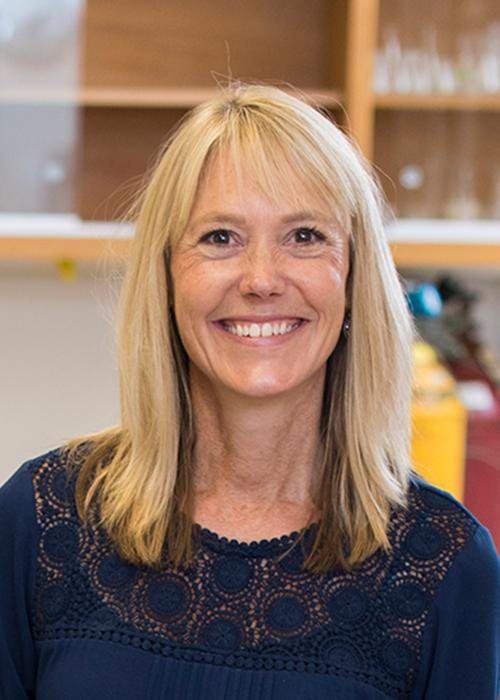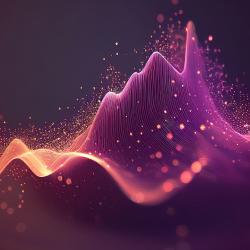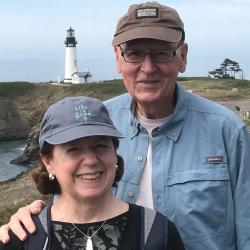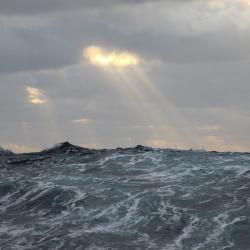
Kimberly H. Halsey
Professor
Department of Microbiology
Kimberly H. Halsey
Professor
Department of Microbiology
Biography
Our research goal is to understand the processes that control the flow of carbon and energy through the marine carbon cycle. Phytoplankton are the single celled microbes that use light energy to convert carbon dioxide to organic carbon in aquatic systems. Research in my lab focuses on understanding strategies used by phytoplankton to optimize their growth. We are interested in determining how these strategies vary with different environmental conditions (i.e., nutrients, light, CO2, pH) and between species. Understanding these growth strategies can then be used to improve global models of primary production and models of microbial phototrophic growth.
Research Interests
- Environmental Microbiology
- Phytoplankton Ecophysiology
- Primary production
- Volatile Organic Compounds
Education
Ph.D., Oregon State University
Research areas
Applied Microbiology Aquatic Microbiology and Ecology Research Cellular Metabolism and InteractionPublications
- Knowles, B., Bonachela, JA., Cieslik, N., Della Penna, A., Diaz, B., Baetge, N., Behrenfeld, MJ., Naumovitz, K., Boss, E., Graff, JR., Halsey, KH., Haramaty, L., Karp-Boss, L., Bidle, KD. 2023. Altered growth and death in dilution-based viral predation assays. Plos One. DOI: 10.1371/journal.pone.0288114.
- Fisher, NL., Halsey, KH., Suggett, DJ., Pombrol, M., Ralph, PJ., Lutz, A., Sogin, EM., Raina, JB., Matthews, JL. 2023. Light-dependent metabolic shifts in the model diatom Thalassiosira pseudonana. ALGAL RESEARCH-BIOMASS BIOFUELS AND BIOPRODUCTS. DOI: 10.1016/j.algal.2023.103172.
- Stephens, BM., Fox, J., Liu, ST., Halsey, KH., Nicholson, DP., Traylor, S., Carlson, CA. 2023. Influence of amino acids on bacterioplankton production, biomass and community composition at Ocean Station Papa in the subarctic Pacific. ELEMENTA-SCIENCE OF THE ANTHROPOCENE. DOI: 10.1525/elementa.2022.00095.
- Halsey, KH., Giovannoni, SJ. 2023. Biological controls on marine volatile organic compound emissions: A balancing act at the sea-air interface. Earth-Science Reviews. DOI: 10.1016/j.earscirev.2023.104360.
- Penta, W.B, Fox, J., and K.H. Halsey (2021). Rapid photoacclimation during episodic deep mixing augments the biological carbon pump. Limnology and Oceanography. 66:1850-1866. doi: 10.1002/lno.11728
- Giovannoni, S.G., Halsey, K.H., Saw, J., Muslin, O., Suffridge, C.P., Sun, J., Lee, C., Moore, E.R., Temperton, B., and Noell, S.E. 2019. A parasitic cycle that shuttles energy from phytoplankton to heterotrophic bacterioplankton. mBio 10(2):e00246-19.
- Davie-Martin, C.L. Giovannoni, S.J., Behrenfeld, M.J., Penta, W.B, and K.H. Halsey (2020). Seasonal and spatial variability in the biogenic production and consumption of volatile organic compounds (VOCs) by marine plankton in the North Atlantic Ocean. Frontiers in Marine Science. doi.org/10.3389/fmars.2020.611870
- Moore, E.R., Davie-Martin, C., Giovannoni, S.J., and K.H. Halsey (2020). Pelagibacter metabolism of diatom-derived volatile organic compounds imposes an energetic tax on photosynthetic carbon fixation. Environmental Microbiology. 22(5):1720-1733 doi: 10.1111/1462-2920.14861
- Fox, J., Behrenfeld, M.J., Haentjens, N., Chase, A., Kramer, S.J., Boss, E., Karp-Boss, L., Fisher, N.L., Penta, W.B., Westberry, T.K., and K.H. Halsey (2020). Phytoplankton growth and productivity in the western North Atlantic: Observations of regional variability from the NAAMES field campaigns. Frontiers of Marine Science. 7:24 doi: 10.3389/fmars.2020.00024



